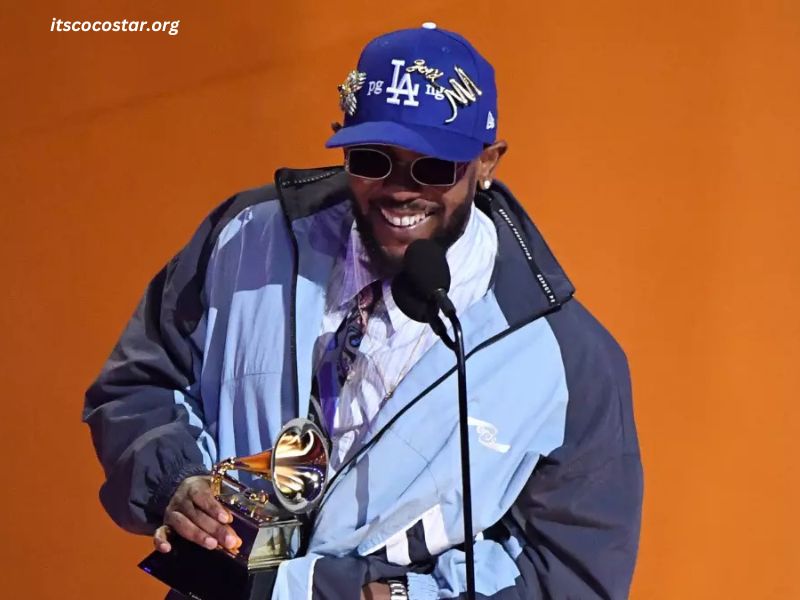Introduction: Kendrick Lamar is undeniably one of the most influential figures in modern hip-hop. Often referred to as the “Youngest Head Nigga in Charge,” Kendrick has made his mark on the music industry, earning both critical acclaim and commercial success. This article delves into Kendrick Lamar’s journey to becoming the Youngest Head Nigga in Charge, highlighting his early life, rise to fame, musical achievements, and impact on culture. With his unique blend of lyricism, social commentary, and unmatched work ethic, Kendrick has redefined what it means to be a true leader in the rap game.
The Early Years: From Compton to the World Stage
Kendrick Lamar Duckworth was born on June 17, 1987, in Compton, California. Compton, a city with a rich history in hip-hop and a reputation for producing some of the biggest names in rap, would shape Kendrick’s music and vision from an early age. Growing up in a neighborhood filled with gang violence and systemic struggles, Kendrick’s environment influenced his worldview, which would later become a hallmark of his artistry.
Kendrick’s musical journey began at a young age. As a child, he was inspired by the music of his family and the influence of local legends such as Dr. Dre, Snoop Dogg, and Tupac Shakur. The streets of Compton offered Kendrick both the challenges and opportunities that would mold him into the artist he is today. He began writing poetry and rapping at the age of 8, and by his teenage years, he was recording and releasing mixtapes under the name K.Dot.
His breakthrough came in 2003 with the release of his first mixtape, Youngest Head Nigga in Charge (Hub City Threat: Minor of the Year), which was a tribute to his aspirations and the nickname that would later define his rise. The mixtape gained significant local attention and helped Kendrick secure a spot on the radar of the hip-hop world.
The “Youngest Head Nigga in Charge” Nickname: A Symbol of Kendrick’s Rise
The phrase “Youngest Head Nigga in Charge” became synonymous with Kendrick Lamar’s determination and ambition. Kendrick’s journey from local underground artist to worldwide sensation embodies the hustle and grind necessary to earn such a title in the rap world. His early projects like Overly Dedicated (2010) and Section.80 (2011) solidified his reputation as a formidable talent, with his blend of conscious rap, storytelling, and introspective lyrics catching the attention of major industry figures and fans alike.
In the competitive world of hip-hop, the title of “Head Nigga in Charge” is often reserved for artists who have proven themselves to be influential, successful, and trailblazers in the genre. By adopting the term “Youngest Head Nigga in Charge,” Kendrick was signaling to the world that he was ready to take charge, not only as an artist but as a voice for his generation.
His work ethic, authenticity, and unwavering commitment to his craft have made him one of the most respected and revered figures in the hip-hop industry. As Kendrick’s popularity grew, the nickname stuck. It became a symbol of his authority, not just in the music world, but in his ability to speak truth to power, challenge societal norms, and elevate the culture of hip-hop to new heights.
Kendrick Lamar’s Breakthrough: good kid, m.A.A.d city
In 2012, Kendrick Lamar released his critically acclaimed album good kid, m.A.A.d city, which would become a cornerstone of his career and solidify his status as the “Youngest Head Nigga in Charge.” The album’s deeply personal storytelling, combined with its vivid portrayal of life in Compton, resonated with audiences worldwide. It chronicled the experiences of a young Kendrick navigating the dangers of his neighborhood, the pressures of family, and his quest for identity.
The album was a commercial and critical success, earning Kendrick several Grammy nominations and widespread praise for its innovative approach to storytelling. good kid, m.A.A.d city was more than just an album—it was a cultural moment. The project not only showcased Kendrick’s lyrical prowess but also his ability to craft a narrative that highlighted the realities of black life in America. Songs like “Swimming Pools (Drank)” and “Bitch, Don’t Kill My Vibe” became anthems of a generation.
With good kid, m.A.A.d city, Kendrick Lamar began to transcend the title of “Youngest Head Nigga in Charge” and evolved into a cultural icon. The album was a direct reflection of his artistry and his ability to balance commercial appeal with a deep, socially conscious message. Kendrick’s rise to the top was no longer a question—he had arrived.
Social Commentary and Political Influence: Using Music to Lead
As the Youngest Head Nigga in Charge, Kendrick Lamar has never shied away from using his platform to address pressing social issues. One of the most defining characteristics of his career is his ability to weave political and social commentary into his music. Kendrick’s work often focuses on race, identity, inequality, and the struggles of marginalized communities.
His album To Pimp a Butterfly (2015) is widely regarded as a masterpiece, blending jazz, funk, and spoken word poetry with powerful commentary on race and systemic oppression. Tracks like “Alright” became rallying cries for social movements like Black Lives Matter, with Kendrick himself becoming a voice for justice and equality. His unapologetic exploration of African-American identity, police brutality, and systemic racism in To Pimp a Butterfly solidified his status as a thought leader within the hip-hop community and beyond.
The song “Alright,” in particular, became a symbol of resilience and resistance. Its chorus, “We gon’ be alright,” was embraced by activists and protesters, reflecting Kendrick’s role in using music to inspire and mobilize people. The album’s success—both critically and commercially—demonstrated Kendrick Lamar’s ability to combine political engagement with artistry, further cementing his title as the “Youngest Head Nigga in Charge.”
Kendrick Lamar’s Continued Evolution: DAMN. and the Pulitzer Prize
In 2017, Kendrick Lamar released his fourth studio album, DAMN., which showcased yet another evolution in his sound and lyrical complexity. The album continued to build on themes of self-reflection, spirituality, and the complexities of modern-day America. DAMN. debuted at number one on the Billboard 200 and received widespread acclaim, earning Kendrick his first Pulitzer Prize for Music in 2018—the first non-jazz or classical artist to receive this prestigious honor.
This recognition was historic. Kendrick Lamar’s ability to transcend the boundaries of hip-hop and create music that resonated with audiences of all backgrounds and genres demonstrated his continued growth as an artist and his unrelenting influence. The Pulitzer Prize, often reserved for more traditional forms of music, solidified Kendrick’s position as not only the Youngest Head Nigga in Charge but as a transcendent artist whose work shaped the cultural zeitgeist.
Kendrick Lamar’s Influence on Hip-Hop and Culture
Kendrick Lamar’s impact on hip-hop and culture cannot be overstated. His ability to merge personal experiences with universal themes has made him an artist that appeals to listeners from all walks of life. Beyond his music, Kendrick’s influence is felt in fashion, film, and activism. He has worked with major brands, created soundtracks for films such as Black Panther, and used his platform to speak out on issues of racial justice, mental health, and the struggles of the black community.
One of the most profound aspects of Kendrick’s influence is his commitment to authenticity. He has never been afraid to speak his truth, whether it’s in his lyrics or his public appearances. This authenticity has earned him respect not only from fans but from his peers in the industry. Kendrick has worked with some of the biggest names in music, but he remains grounded, never losing sight of his roots or the responsibility he carries as the Youngest Head Nigga in Charge.
Conclusion
Kendrick Lamar’s rise from the streets of Compton to becoming the Youngest Head Nigga in Charge is a testament to his talent, work ethic, and unwavering commitment to his craft. His journey is one of perseverance, artistic growth, and social consciousness. Kendrick has redefined what it means to be a leader in hip-hop, using his platform not only to entertain but also to challenge, educate, and inspire.
As he continues to evolve, there’s no telling how much further Kendrick Lamar will go. One thing is for sure—his influence on the culture will be felt for generations to come. Whether through his music, his activism, or his leadership within the hip-hop community, Kendrick Lamar has proven that he is not just the Youngest Head Nigga in Charge; he is one of the most important voices of his generation.







